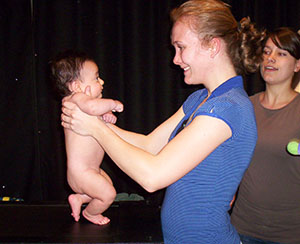
UPDATED
How odd to find this out from The New York Times, of all places?
New research by the director of the University of Virginia’s National Marriage Project flips the elite wisdom on its head: While blue states as a whole have stronger families, when you look at the county-level data, it becomes clear that conservative areas have the advantage.
W. Bradford Wilcox, also a senior fellow at the Institute for Family Studies, which sponsored and published the research, writes on that website that the conventional wisdom is “mostly wrong”:
While it’s true that some of the bluest states in the country—such as Massachusetts and Minnesota—have some of the most stable families, some of the reddest states—such as Utah and Nebraska—do, too. …
Up until now, we have not known about the connection between local political culture and stable family life. As this research brief shows, it turns out, at the local level, red counties typically enjoy somewhat stronger families than do blue counties on at least three measures worth considering: marriage, nonmarital childbearing, and family stability.
Wilcox explains that counties that voted for Mitt Romney for president in 2012 have a higher share of married people:
The red advantage in marriage, in all likelihood, flows in part from higher levels of religious participation and normative support for marriage found in more politically conservative counties.
They also have a lower percentage of “nonmarital childbearing,” whose absence aids family stability.
Teens in red counties are also more likely to be living with both biological parents. Wilcox says these findings hold “without and without controls” for socio-demographic variables.
Wilcox makes an unusual distinction to explain why higher rates of divorce in the South don’t affect the data much:
But this divorce disadvantage does not translate into higher levels of family instability in red America as a whole. That’s probably because nonmarital childbearing, not divorce, is now the biggest engine of family instability in the United States. Here, red America’s stronger religious and normative support for marriage—manifested in higher rates of marriage and lower rates of nonmarital childbearing—means that the divorce disadvantage in red America is outweighed by the fact that children are more likely to be born to a married family in more conservative counties.
Read the research brief and surprisingly balanced New York Times story.
CORRECTION: The research was sponsored and published by the Institute for Family Studies, where Wilcox is a senior fellow, not the National Marriage Project, which he directs. The article and headline have been amended to reflect this.
Like The College Fix on Facebook / Follow us on Twitter
IMAGE: Beth Nazario/Flickr




Please join the conversation about our stories on Facebook, Twitter, Instagram, Reddit, MeWe, Rumble, Gab, Minds and Gettr.